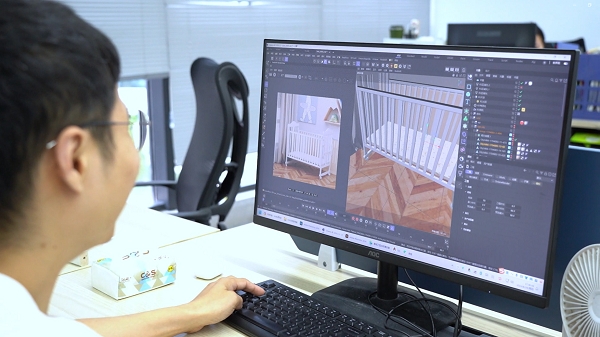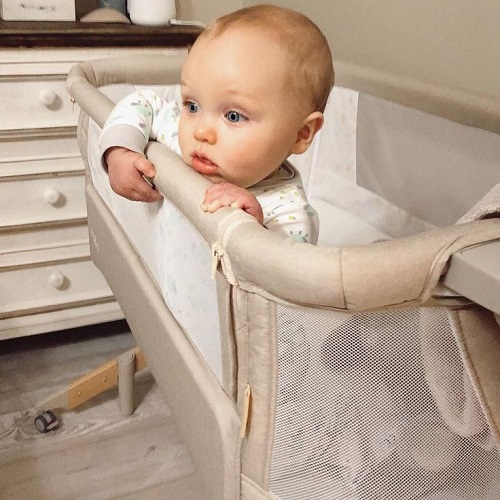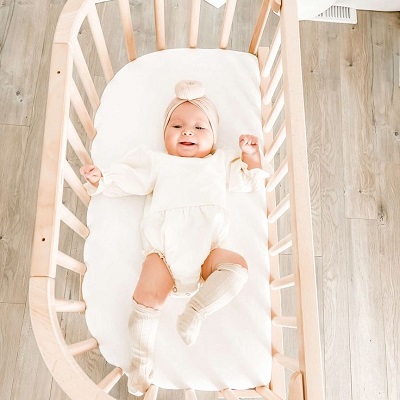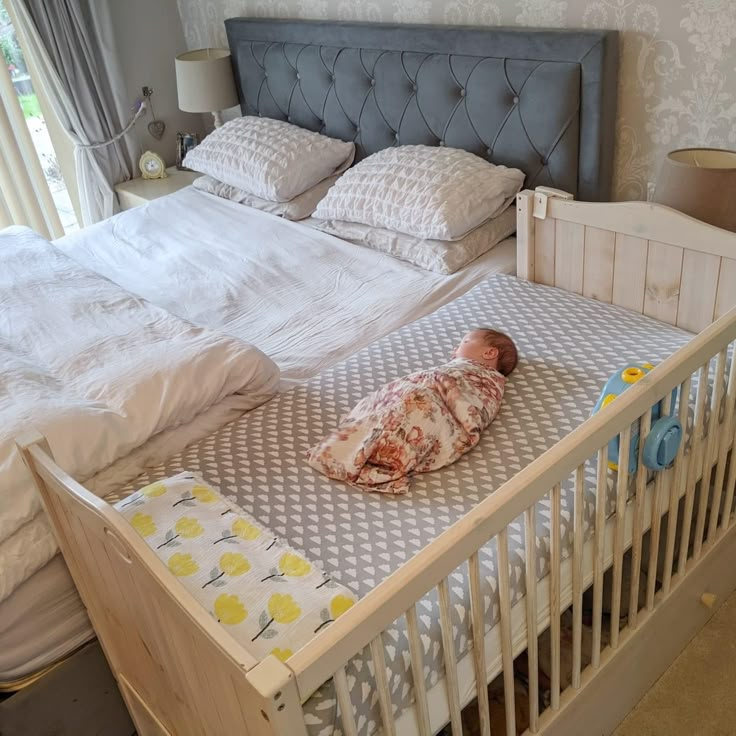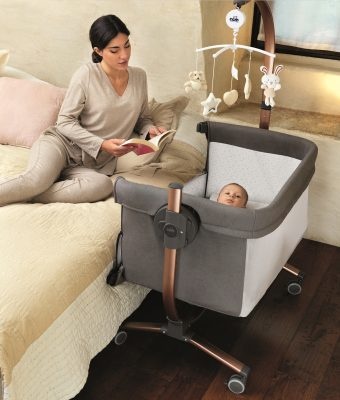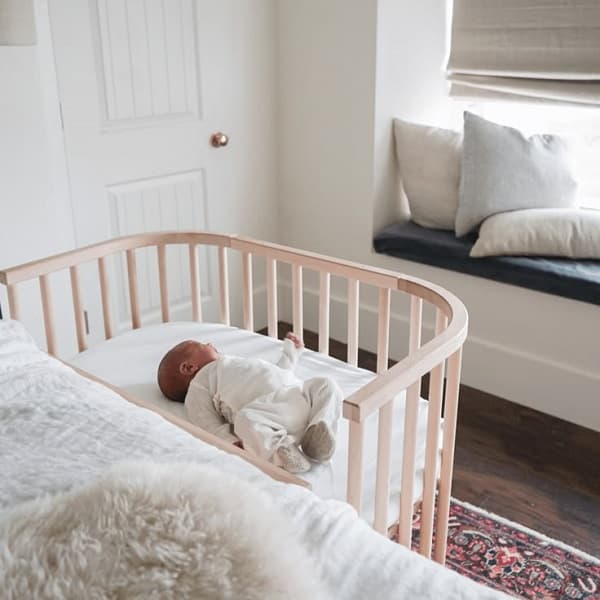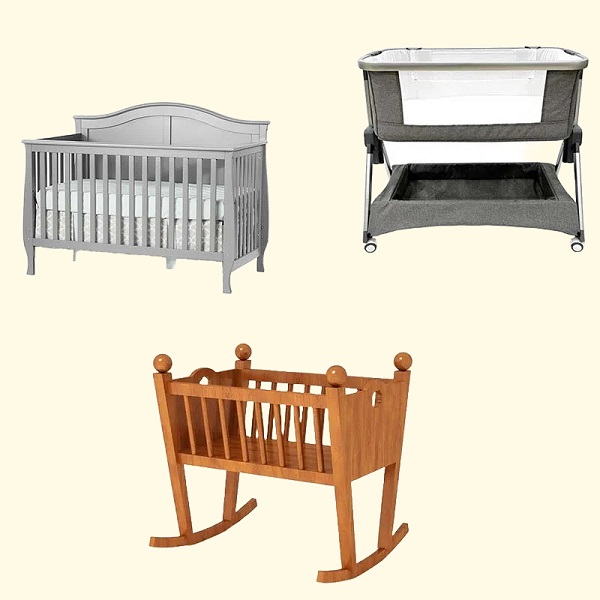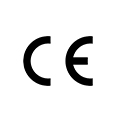Bassinets are a great convenience in the infancy stage of parenting. They provide a safe convenient space for your little one to nap and allow you to keep an eye on them at all times. Better still, most of them are easily portable around the house and have adjustable heights which ensure easy access to the baby.
That said, most keranjang bayi are only designed for infants between 4 to 6 months. They can, therefore, only handle a specific maximum weight based on their structure and size.
This then brings us to a few key questions. For instance, how do you establish the weight limits of your bassinet? Do all bassinets have the same limits? What are the risks of exceeding bassinet weight limits? Come along as we tackle these other vital bassinet weight limit queries.
Potential Dangers of Exceeding the Bassinet Weight Limit
The load-bearing mark of a baby’s cradle is often overlooked by new parents. Each cradle has its own standard load-bearing value, which is based on the engineer’s precise calculation of material strength and structural stability. When the actual load exceeds this value, hidden risks begin to emerge.
Structural Risks
When the load exceeds the standard, the metal bracket of the cradle may experience metal fatigue and irreversible deformation at the plastic joint.
A laboratory test showed that the risk of joint fracture increased by 3 times in simulated shaking of a cradle overloaded by 25%. This damage is difficult to detect with the naked eye, but it may cause the bracket to break at any time and cause the cradle to collapse.
Stability Crisis
Overweight will change the center of gravity distribution of the cradle. When the baby rolls over or shakes, the originally stable four-point support structure may become a three-point force.
In this case, once an external force collision (such as being hit by a pet or toddler) occurs, the probability of rollover increases by 47%. Clinically, there have been cases of infant clavicle fractures caused by cradle rollover.
Insufficient Airflow
Most bassinets are designed with mesh material on the sides to ensure proper airflow within the bassinet; ensuring that the baby can breathe safely. If the mesh sides collapse due to overload, it will disrupt the normal airflow within the bassinet. This in turn puts the baby at risk of suffocation.
Overloaded bassinets tend to sag in the middle, and then the surface is no longer firm or flat to keep the baby’s airway aligned. This increases the risk of suffocation or SIDS.
Accessory Failure Hazards
Excessive weight pressure can accelerate the loosening of screws and wear of joints. A brand recall case showed that overloading caused the locking device to fail prematurely, resulting in a slip-off accident when the parent pushed the bassinet.
What is the Weight Limit of a Bassinet?
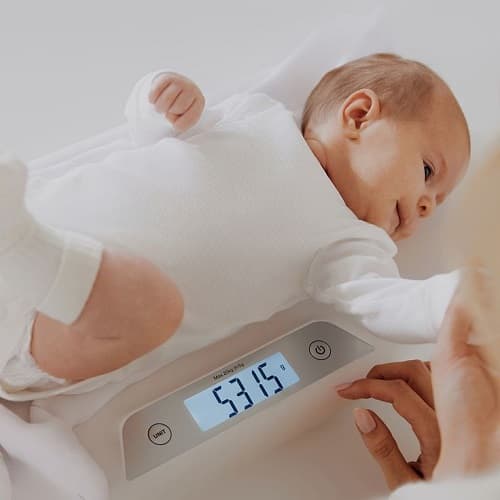
Every bassinet is unique in terms of design, model, and functionality, and its weight limit varies depending on the product design, but the safe load-bearing range of most standard cradles is between 9-18 kg (20-40 lbs). The specific value must be strictly referred to in the product manual.
Portable Travel Bassinet
The portable newborn bassinet is lightweight, compact, and may also have a foldable function. These features often make its maximum weight limit lower. It usually has a weight limit of 4.5-9 kg (10-20 lbs) and is mainly used for short rest for babies aged 0-6 months. The bottom is mostly made of soft materials, and overweight may cause the base to collapse.
Multifunctional Fixed Bassinet (with stand)
The multifunctional bassinet covers a variety of uses, so the bottom design will be more solid and stable. Its upper limit can reach 13.6-18 kg (30-40 lbs), but it should be noted that the dynamic load (impact when the baby is active) may exceed 1.5 times the static value.
In addition, you should also pay attention to the “invisible weight” in the bassinet that is easily overlooked, that is, the additional items in the cradle, which occupy a certain weight:
- Thick mattress (about 1.5-2.5 kg weight increase)
- Hanging toys (0.3-0.8 kg)
- Multi-layer swaddle (0.5-1.2 kg)
Judging whether it is overloaded cannot only focus on the weight of the baby. Actual test cases show that stacking may cause the total weight to exceed the standard by 20%-35%.
Finally, it is recommended that the baby’s weight should not exceed 80% of the limit (for example, if the weight limit is 15 kg, the actual weight should not exceed 12 kg). In addition, when the baby kicks his legs frequently (the impact force can reach 3 times his body weight) or shakes violently, the actual load may instantly exceed the weight limit, accelerating the wear of the bracket.
5 Clear Signs That Your Baby Needs to Leave the Bassinet
1. Body Proportions Exceed the Space Limit
When the baby’s head touches the upper edge of the cradle when lying flat, or the knees are against the edge in a naturally bent state, it means that the longitudinal space is insufficient. The safety threshold is: the inner length of the cradle should be ≥ the baby’s height × 1.2 (such as a 70cm long cradle corresponds to a 58cm tall baby).
2. Collision Risk Caused by Self-Rolling
After a 4-6 month-old baby has mastered continuous rolling, when rolling in a standard cradle (usually 40-50cm wide), the frequency of limb collision with the side wall exceeds 2 times/minute (actual data), which may cause crying or soft tissue contusion.
3. Climbing Action Indicates a Risk of Falling
When the baby shows the following behaviors, the cradle should be stopped immediately:
- Holding the fence to try to stand (even if unsuccessful)
- Using toys to raise the center of gravity
- The trunk is higher than 1/3 of the fence height (e.g. the fence is 30cm high and the baby’s chest is more than 10cm when sitting)
4. Mismatch Between Sleeping Posture and Support
The hardness of the cradle mattress (usually 15-20ILD) cannot meet the spinal development needs of older babies. If the baby is persistently irritable after getting up in the morning and the skin indentation on the back does not subside for more than 10 minutes, it means that a harder mattress is needed.
5. The Movement Frequency Exceeds the Design Load
Babies over 8 months old have an average of 120-150 kicking movements per hour, which is far more than the newborn period (40-60 times/hour). When the cradle has a visible amplification of shaking (amplitude increases by more than 30%), it means that the structure can no longer effectively buffer the impact.
Such occurrences should prompt any parent or caregiver to weigh and see whether the baby has reached the maximum weight limit. Still, regardless of the weight, these are strong indications that the baby has outgrown the bassinet.
What Should You Do When You Realize a Bassinet is Overloaded?
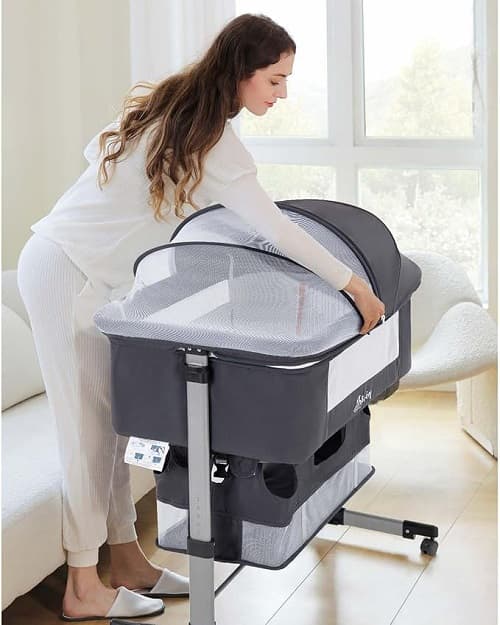
Ensure the Bassinet is Empty
When you notice a bassinet is overloaded, be sure to empty the bassinet sleeping area if there is anything in it aside from a mattress and the baby. This will help you establish whether the baby has indeed reached the limit or whether the extra baggage was overloading the bassinet.
Check the Bassinet Structure
Bassinets can sometimes begin to creak, sag, or seem to malfunction as though they are overloaded yet they are not. Sometimes these can be indicators that something in the structure has come loose or the bassinet is not properly assembled. It is thus prudent to inspect the whole structure and confirm if it is a weight issue or a structure challenge.
Weigh the Baby
In addition to the steps above, always weigh your baby if you have doubts about their safety in a bassinet. It is equally ideal to weigh them regularly once they get closer to the weight limit because babies can sometimes gain a pound or two quite fast.
Discontinue Usage
It is best to always err on the cautious side when it comes to childcare. So, if you notice any bassinet malfunctions or begin to suspect that your baby has reached the weight limit, stop using the bassinet immediately. It is better than continuing to use the bassinet when you have doubts or while it poses risks to the child.
Take time to then ascertain whether the issue is structural or if the baby has outgrown the bassinet. Either way, if you can no longer use the bassinet, it is safe to transition to a crib full-time.
How to Safely Use the Bassinet Within the Weight Limit?
The safe way to use a bassinet is to adhere to pediatric expert recommendations and the usage instructions that the bassinet manufacturer provides. Here are some of the key safety recommendations to start you off.
Follow Safe Sleep Guidelines
The American Association of Pediatrics recommends the following safe sleep practices for parents using bassinets for their babies:
- Keep the bassinet sleeping area clean and empty.
- Use only a firm mattress that fits the bassinet and a fitted sheet; no loose bedding or pillows.
- Place an infant on their back to sleep for safe unobstructed breathing.
- Ensure the bassinet has breathable sides and the room is well-ventilated.
Carefully Follow Assembly Instructions
Even the safest bassinet can become unsafe if you do not assemble it correctly.
Therefore, pay attention to every assembly instruction and counter-check every step at the end. Confirm every part is as it should be. Exert weight on the bassinet as well to ensure it is stable and can bear weight safely. Perform regular safety checks as parts can come loose with regular use.
Be Mindful of Key Safety Practices
In your day-to-day use of a bassinet:
- Strive to maintain high hygiene standards.
- Always position the bassinet before placing the baby in it as opposed to moving the bassinet when the baby is in it.
- Lock the wheels when you are done moving the bassinet.
- Always place the bassinet on a flat stable floor away from any hazards like flames or staircases.
Kesimpulan
It is even more fortunate to learn them before you choose a bassinet because you can then make a more informed purchase. Either way, we hope that you can now confidently check for bassinet weight limits, safely adhere to them, and know when it is time to transition your baby away from a bassinet.
Looking for safe quality wholesale bassinets? We, at Clafbebe, have a broad selection of designs including custom options. Hubungi kami for a free quote or to learn more about our bassinet range.
Artikel Terkait yang Direkomendasikan:
- Keranjang Bayi Vs Keranjang Bayi Moses: Mana yang Harus Anda Pilih?
- Apakah Anda Membutuhkan Tempat Tidur Bayi? Panduan untuk Orang Tua Baru
- Apa yang Perlu Diperhatikan pada Keranjang Bayi?
- Best Bassinet of 2024: Picks for Wholesale Retailers
- Tempat Tidur Bayi Vs Keranjang Bayi: Bagaimana Memilih untuk Bayi Anda?
- 10 Produsen Keranjang Bayi dengan Rating Teratas
- Bagaimana Cara Membuat Bayi Baru Lahir Tidur di Keranjang Bayi?

